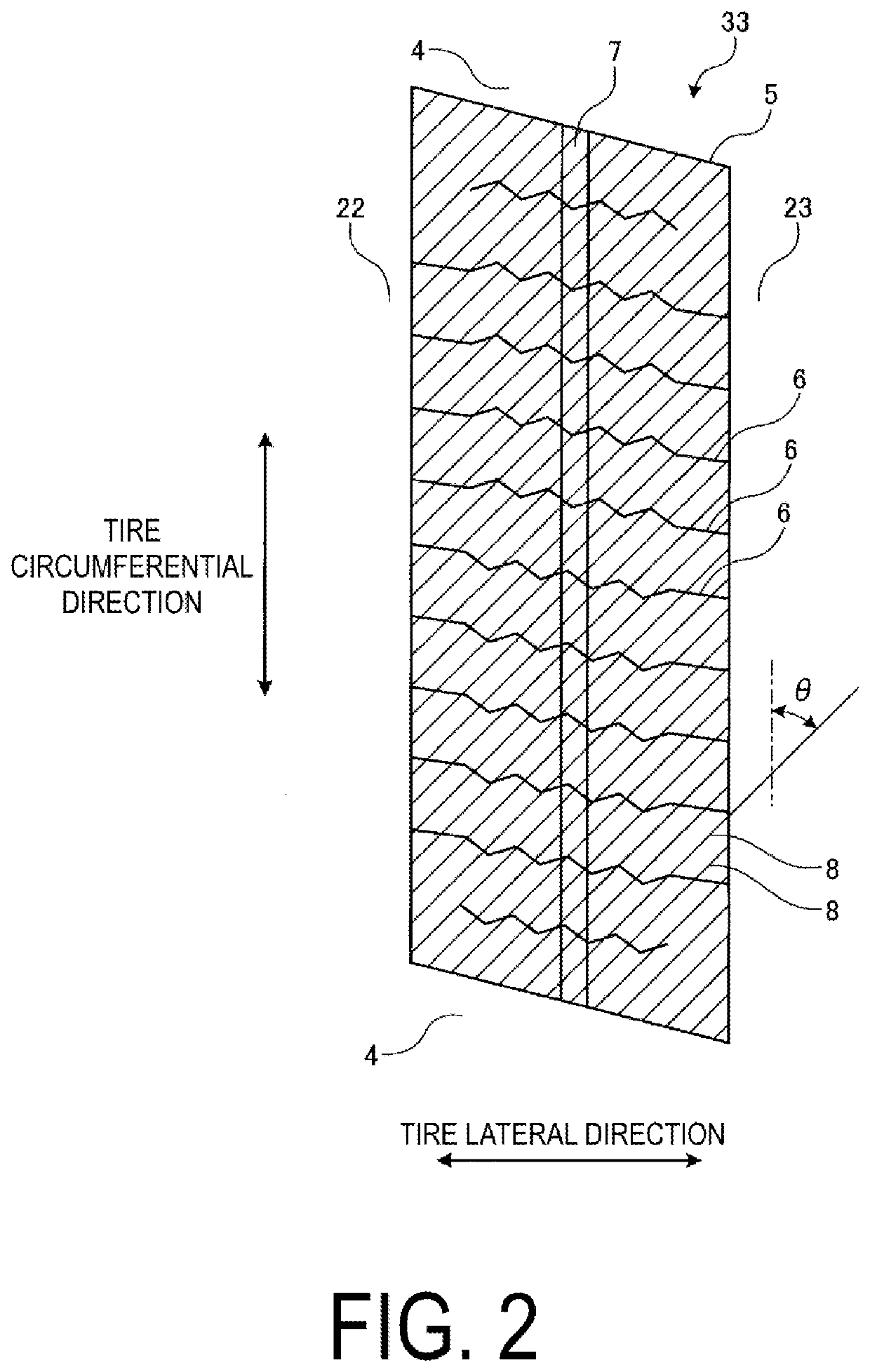Pneumatic tire
a technology of pneumatic tires and tyres, which is applied in the field of pneumatic tires, can solve the problems of increasing the modulus causing the separation between the earthing tread and the cap tread, and reducing the braking performance of the tire, so as to ensure the low rolling resistance of the tire, and improve the braking performance. the effect of ice performan
- Summary
- Abstract
- Description
- Claims
- Application Information
AI Technical Summary
Benefits of technology
Problems solved by technology
Method used
Image
Examples
modified examples
[0115]FIGS. 6 to 8 are explanatory diagrams illustrating modified examples of the block illustrated in FIG. 3. In these drawings, constituents that are the same as those illustrated in FIG. 3 have the same reference signs, and explanations thereof are omitted.
[0116]In the configuration of FIG. 3, the earthing tread 7 is disposed in the central portion of the block 5, and the undertread 152 includes the thickened portion 1521 in each of the regions to the left and right of the earthing tread 7.
[0117]However, no such limitation is intended, and the earthing tread 7 may be disposed closer to one of the edge portions of the block 5 (see FIGS. 6 and 7). Additionally, the undertread 152 may include the thickened portion 1521 in only one of the regions to the left and right of the earthing tread 7 (see FIGS. 6 and 7) or may not include the thickened portion 1521 (see FIG. 8).
[0118]For example, in the configurations of FIGS. 6 and 7, the earthing tread 7 is disposed closer to one of the edg...
examples
[0138]FIGS. 9A-9B include a table showing the results of performance tests of pneumatic tires according to embodiments of the technology. FIG. 10 is an explanatory diagram illustrating a test tire of the Conventional Example.
[0139]In the performance tests, a plurality of mutually differing pneumatic tires were evaluated for (1) braking performance on ice, (2) electrostatic suppression performance (electrical resistance value), and (3) separation resistance performance (see FIGS. 9A-9B). In the performance tests, pneumatic tires having a tire size of 195 / 65R15 91Q were mounted on rims having a rim size of 15×6J, inflated to an air pressure of 210 kPa, and loaded with the load specified by JATMA. The pneumatic tires were mounted on the test vehicle, a four wheel drive sedan with an engine displacement of 3.0 L.
[0140](1) In the evaluation relating to braking performance on ice, the test vehicle was driven on a predetermined icy road surface and the braking distance from a travel speed ...
PUM
| Property | Measurement | Unit |
|---|---|---|
| elongation | aaaaa | aaaaa |
| inclination angle | aaaaa | aaaaa |
| belt angle | aaaaa | aaaaa |
Abstract
Description
Claims
Application Information
 Login to View More
Login to View More - R&D
- Intellectual Property
- Life Sciences
- Materials
- Tech Scout
- Unparalleled Data Quality
- Higher Quality Content
- 60% Fewer Hallucinations
Browse by: Latest US Patents, China's latest patents, Technical Efficacy Thesaurus, Application Domain, Technology Topic, Popular Technical Reports.
© 2025 PatSnap. All rights reserved.Legal|Privacy policy|Modern Slavery Act Transparency Statement|Sitemap|About US| Contact US: help@patsnap.com



